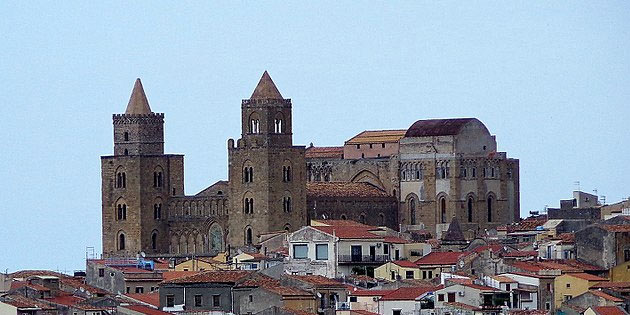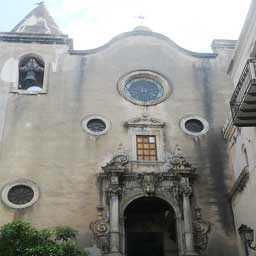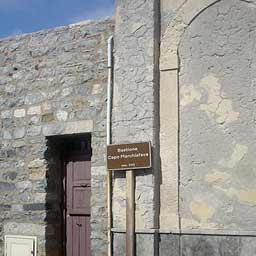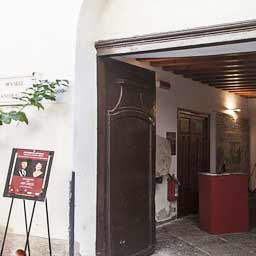Cathedral of Cefalù
The Cathedral of Cefalù, the name by which the Cathedral Basilica of the Transfiguration is known, represents one of the most important examples of Sicilian medieval architecture. In it the characteristics of the Cistercian architectural culture of Normandy merge with Byzantine and Arab elements.
According to tradition, the cathedral was built in 1131 at the behest of the Norman Roger II after having saved himself from a violent storm at sea and after having found refuge on the beach of Cefalù. However, given the topography of the site which gives it the character of a natural fortress, it is believed that the reasons were of a military nature. cemetery, has a magnificent portico divided by three large arches supported by columns. Under the portico there is the Porta Regum, embellished with a finely decorated marble portal, and with paintings on the sides. The façade is framed by two mighty towers that recall the construction techniques of the churches of Normandy, lightened by elegant mullioned windows and single lancet windows and surmounted by pyramidal spiers. The two towers are different from each other and have particular battlements: one is decorated with battlements in the shape of flames that symbolize the spiritual power of the church, the other with Ghibelline battlements, the temporal one of the crown. The central body presents, in the upper part, thirteen pointed arches decorated with arabesques resting on small columns. The external apsidal front are decorated with intertwined arches and slender columns with capitals and smooth pilasters.
The interior is in the shape of a Latin cross, divided into three naves by two rows of ancient spolio columns: fourteen shafts of pink granite and two of cipollino, with bases and capitals from the 2nd century AD Two large figured capitals support a triumphal arch. On the walls of the transept there is a gallery arcades with columns, carved into the thickness of the building in correspondence with the external pseudo-loggia.
The distinctive feature of the cathedral of Cefalù is its splendid mosaic decoration, which it covers the apse and about half of the side walls. The mosaics, considered among the most beautiful in Sicily, were made by the Greek monks of Mount Athos, skilled mosaic artists. In the calotte of the large central apse the figure of Christo Pantocrator dominates who blesses, according to the Greek rite, only with three fingers of his right hand while, with the left, he holds the open Gospel. Under the figure of Christ Pantocrator is depicted the Madonna between the four Archangels in the act of praying and, on the sides, the Evangelists, the Apostles, the Prophets of the Old Testament and the Fathers of the Church.
The cloister annexed to the Norman cathedral, it represents one of the most considerable artistic testimonies of the Sicilian Middle Ages. Of considerable value are the figured capitals that surmount the paired columns.



